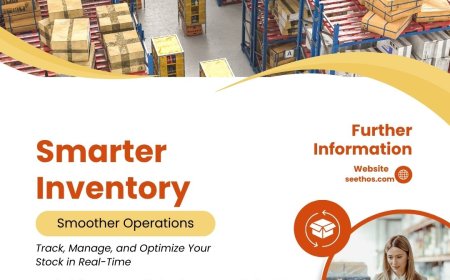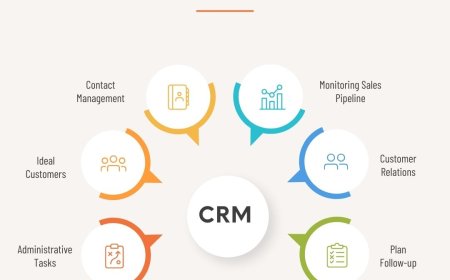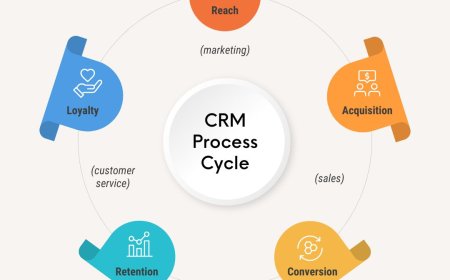How Fintech Software Is Transforming Compliance and Risk Management Solutions
Explore how fintech software is revolutionizing compliance and risk management with automated workflows, real-time monitoring, and smarter regulatory reporting in 2025.

In todays digital economy, financial institutions are navigating one of the most tightly regulated landscapes in history. Rapidly evolving global compliance requirements, emerging risks from digital transactions, and the rising threat of cybercrime have created unprecedented pressure on banks, lenders, insurers, and fintech startups alike. Compliance and risk management are no longer just backend responsibilitiesthey are strategic pillars of financial business operations.
Against this backdrop, fintech software has emerged as a transformative force. Once considered a disruptive technology only for startups, fintech solutions are now reshaping how legacy institutions and new entrants alike approach regulatory compliance and enterprise risk. With automation, AI, data analytics, and real-time monitoring, fintech software enables companies to move beyond reactive compliance and embrace proactive, integrated governance models.
This article explores how fintech software is transforming the world of compliance and risk management, detailing how the systems work, the benefits they deliver, how to develop such solutions, and what real-world applications are already in place across the financial ecosystem.
The Compliance and Risk Challenge in Financial Services
Compliance requirements for financial institutions are continually evolving. From Know Your Customer (KYC) and Anti-Money Laundering (AML) regulations to GDPR, PCI DSS, and FATCA, the regulatory burden is complex, nuanced, and jurisdiction-specific.
Traditional compliance models, built on manual audits, fragmented data, and siloed risk assessments, are no longer sustainable. At the same time, institutions must manage risks ranging from credit default and fraud to market volatility and operational disruptions. These challenges demand a system that can monitor, detect, analyze, and report risks and compliance gaps at scalein real time.
This is where modern fintech software steps in.
What Fintech Software Brings to Compliance and Risk Management
Fintech software is designed to digitize and optimize the full spectrum of financial services. In the context of compliance and risk, this means using intelligent software systems to automate data collection, identify anomalies, enforce policies, generate reports, and support regulatory readiness.
Whether for a multinational bank or a digital-first lending platform, fintech software provides real-time insights into operational health, customer behavior, and regulatory alignmentoffering decision-makers both macro and micro-level control.
Core Benefits of Fintech Software for Compliance and Risk
Real-Time Monitoring
Fintech platforms continuously scan transactional data, customer interactions, and system activity to detect suspicious behavior or compliance deviations the moment they occur. This immediate visibility allows for quick mitigation and reduced exposure.
Automation of Manual Processes
Compliance reporting, KYC document verification, transaction auditing, and fraud detection can all be automated using rule-based engines and machine learning models. This reduces human error and speeds up processing.
Centralized Risk Frameworks
Fintech software allows for unified dashboards where credit risk, market exposure, and operational threats are tracked together, enabling a holistic view of enterprise risk across departments and geographies.
Improved Accuracy and Consistency
With consistent logic applied across all data sources, decisions and alerts are more reliable. The software can be programmed to adapt as regulations change, ensuring updates are automatically reflected in workflows.
Cost Efficiency
By automating routine compliance tasks, institutions reduce the overhead of large audit and regulatory teams. At the same time, real-time risk intelligence prevents costly penalties and legal exposure.
Enhanced Data Integrity and Traceability
Digital records and audit trails make it easier to trace decisions and prove compliance to regulators. Reports are generated with precision, and data can be easily reviewed during external audits.
Scalable and Modular Solutions
Whether an organization needs a lightweight tool for AML screening or an end-to-end governance platform, fintech software offers modular components that can scale with growth and complexity.
How Fintech Compliance Software Works
Behind the scenes, a typical fintech compliance and risk management system integrates multiple data sources, algorithms, and business rules to ensure comprehensive monitoring and decision support.
Data Aggregation
The platform pulls data from core banking systems, customer onboarding tools, transaction logs, third-party sources, and even external regulatory feeds. APIs and data connectors ensure seamless ingestion from both structured and unstructured sources.
Identity and Verification Layers
KYC modules validate customer identity using biometric recognition, document scanning, or third-party data verification. This onboarding layer ensures regulatory alignment from the very first interaction.
Rules Engine
Business rules define thresholds, triggers, and alerts. For example, transactions over a certain amount may flag for review, or a pattern of rapid deposits and withdrawals may trigger a fraud alert. These rules are updated as regulations evolve.
Risk Scoring and Modeling
Using AI and statistical models, the system assigns risk scores to customers, vendors, or transactions. These models adapt over time using machine learning, improving accuracy and identifying emerging threats.
Alerting and Workflow Automation
When risk conditions or compliance issues arise, the software initiates automated workflows: notifying compliance officers, escalating cases, or requesting additional documentation. Decision-making becomes structured and auditable.
Reporting and Audit Tools
Regulatory and internal reports can be generated on demand, customized for specific authorities, time frames, or compliance domains. Detailed logs ensure full audit trails.
How to Build Fintech Compliance and Risk Solutions
Developing custom fintech compliance software is a strategic undertaking. It requires a mix of regulatory knowledge, advanced software engineering, and domain expertise. Collaborating with a seasoned Fintech software development company allows organizations to accelerate development, reduce risks, and align tightly with their operational goals.
Identify Regulatory and Business Requirements
Every financial organization faces a unique set of regulations based on its services, jurisdictions, and clientele. Start by mapping the specific compliance frameworks that the system must supportsuch as MiFID II, AML5, or CCPA.
Define Use Cases and User Roles
List the processes you want to automate: customer onboarding, suspicious activity detection, audit reporting, etc. Clarify who will use the softwarecompliance officers, analysts, auditorsand what functionality each group requires.
Choose Your Tech Stack and Architecture
Modern fintech systems are cloud-native and microservice-based for flexibility. Backend technologies may include Python, Node.js, or Java, while frontend interfaces are typically built in Angular or React. Security protocols and encryption standards should align with industry regulations.
Build or Integrate Data Pipelines
Connect the software to internal and third-party data sources. Design real-time pipelines for high-frequency data such as transactions and batch pipelines for periodic reporting.
Design Rule-Based and AI-Powered Modules
Develop a flexible rules engine and, if needed, AI models for anomaly detection and predictive risk scoring. These models should be trained on historical data and fine-tuned through ongoing use.
Develop User Interfaces and Dashboards
Design intuitive dashboards for compliance teams to visualize risk trends, manage alerts, track case resolution, and generate reports. Usability is key to adoption.
Ensure Security and Auditability
Implement multi-level authentication, role-based access, encrypted data storage, and full event logging. Compliance software must be as secure as the financial systems it monitors.
Test, Validate, and Scale
Simulate regulatory audits, real-world fraud attempts, and edge cases to validate system performance. Once proven in a controlled environment, roll out the system with clear training and support protocols.
Real-World Applications in 2025
Digital-First Banks
Neobanks use fintech software to automate KYC checks in under 60 seconds and continuously monitor for AML activity across millions of micro-transactions.
Cross-Border Payment Platforms
Compliance software flags suspicious transfers based on geographic risk, transaction velocity, and historical user behaviorhelping prevent fraud and sanctions violations.
Insurance Underwriters
AI models within fintech platforms score customer risk at onboarding and continuously monitor behavior post-enrollment, enabling dynamic premium adjustments.
Investment Firms
Fintech systems ensure compliance with trading rules, market conduct regulations, and insider trading policies while providing instant reporting for financial authorities.
Peer-to-Peer Lending Marketplaces
Automated verification and fraud detection allow platforms to remain compliant without manual review of every borrower, maintaining scalability and speed.
Final Thoughts
In the high-stakes world of financial services, compliance and risk management are no longer side functions. They are central to customer trust, brand reputation, and long-term viability. As the regulatory environment grows more complex, fintech software offers a way forwardturning complexity into clarity, risk into foresight, and compliance into an integrated part of strategic growth.
For organizations seeking to modernize their risk and compliance functions, the right software is not just a toolits an operational asset. Building or adopting intelligent, adaptable fintech platforms today ensures that businesses can navigate tomorrows challenges with agility and confidence.











































